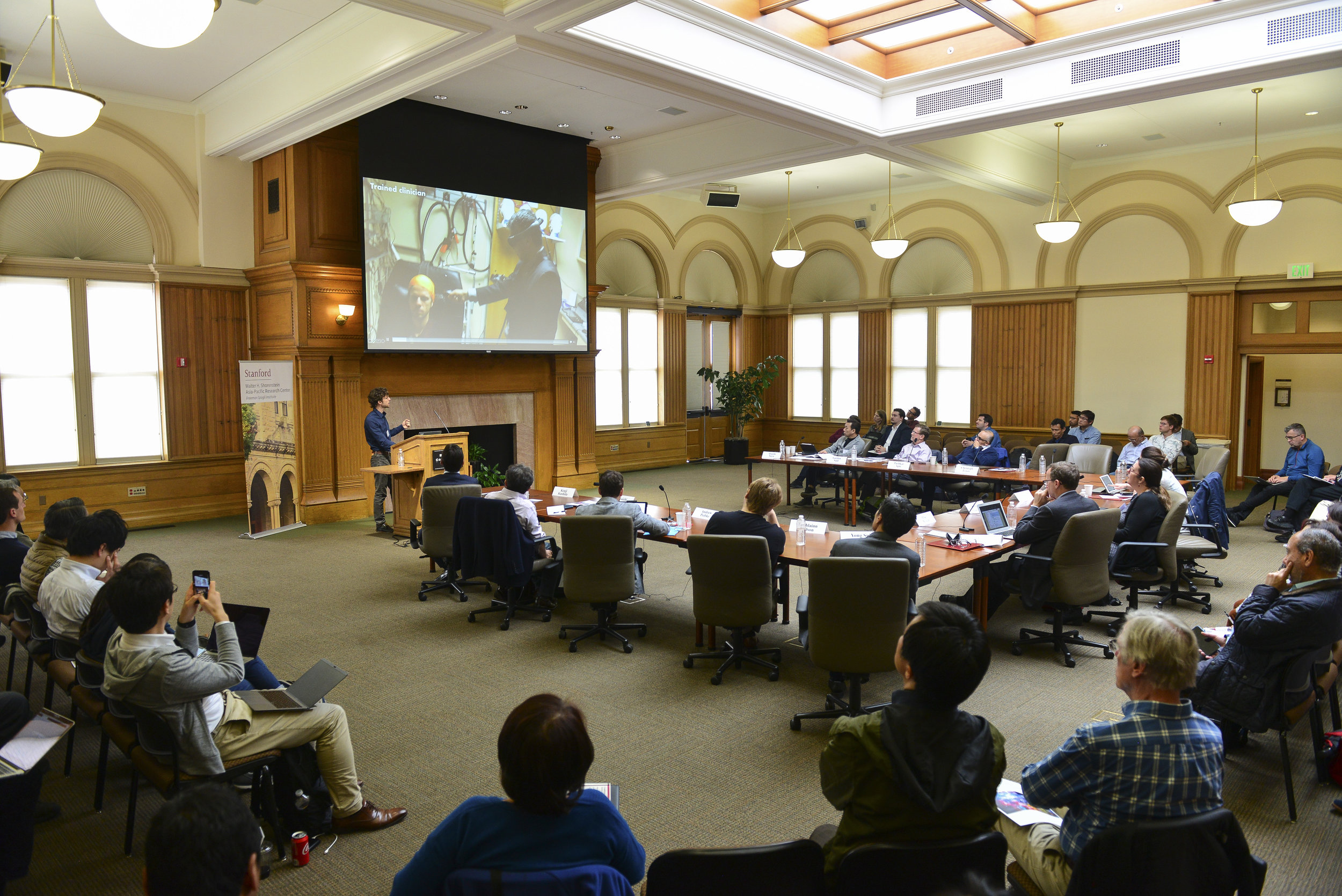On Tuesday, May 21, the Stanford Silicon Valley - New Japan Project hosted “Artificial Intelligence (AI), Intelligence Augmentation (IA), Human Machine Interfaces (HMI): Frontier Research and Policies for Navigating the Future Together” at Stanford University.
This conference was a joint production with Japanese venture community, Mistletoe, Inc. — the second jointly produced conference centered around the topic of machine intelligence, and the socio-economic impact of new technologies (Human Autonomy in the Age of Automation: Envisioning 2045 Full Final Report).
The conference featured three roundtable sessions throughout the day. Each session began with presentations, followed by discussion (see full agenda).
Summary
The diffusion and deployment of technology is not simply shaped by the technology itself. Complementary technologies are often required to derive value from the technology, and other factors such as business models for which the technology solves significant “pain points,” business organizations that can harness the set of technologies, along with societal factors such as regulations, employment regimes, demographics, social norms, and political dynamics can critically affect how technologies diffuse.
This conference centered on the technological development, deployment, and diffusion of various forms of human-machine interfaces. In the morning, the speakers and discussants examined technologies utilizing Artificial Intelligence (AI), IA (Intelligence Augmentation), VR (Virtual Reality), and pushing human-machine interfaces (HMI) to the next level of commercial development. The first session featured Komatsu, which has a track record of working closely with Silicon Valley startups to deploy services that create value in new ways. To enable remotely operated construction equipment, they are working with Lim Innovations, which specializes in custom prosthetics, in order to develop haptics and real feedback. SE4 is a new startup that has developed remote operation with virtual reality-based manipulation, but with the remote robots taking care of the detailed actions themselves. The second session introduced three entities facilitating cutting edge technological breakthroughs and university-industry collaborations to bring new technologies to the world, featuring Mistletoe, the Stanford Byers Center for Biodesign, the UC Berkeley Center for Information Technology in the Interest of Society (CITRIS), and research that is in the initial phases of spinning out of a research lab into a commercial deployment. The afternoon focused on discussion of policy dynamics and considerations surrounding the use of AI and IA, particularly in broad societal deployments.


























